In today’s digital era, no matter what business/niche you’re in, “WEBSITE” has become an inevitable one. On a funny note, how were you able to read this blog? Since it was published on our website, right?
Did you know?
As of March 2022, there are 1.93 billion approx. websites online.
Being a healthcare service provider, through a full-fledged website, you can showcase your services on the web, say goodbye to long queues, offer convenient virtual consultations, and more importantly abide by the COVID-19 protocols as well. 🙂
Previously, we’d covered plenty of topics related to online healthcare practices, all the blog posts are available on our website, if you haven’t read them, do checkout. You’ll have so many useful insights in each blog that will enhance your online visibility.
In this post, we will walk you through the entire medical website development journey – useful features & functionalities to add, tips & tricks, and the average development cost. For sure, you can keep this blog as a reference when building/revamping yours.
Without any delays, let’s hop right in.
1. Does having a Medical Website, a Boon or Bane?
Ofcourse, that’s a boon! Just read below, you’ll understand why we call it a boon.
You’re in the age of 2022 and still, if you don’t have a healthcare website, then you’ll be left out in the virtual medical landscape.
Especially, during the pandemic, it was telehealth that served as reimbursement in the healthcare industry without breaking the bonding between doctors & patients.

Since the spike of COVID-19, you can see, telehealth business models are proliferating, which is to say, doctors who were providing virtual care during emergencies have now started introducing hybrid models, where patients can either approach for virtual treatment or in-person visits.
As patients and healthcare providers have geared up their wheels on telehealth practices, it’s predicted that as of 2020, around $250 billion of US healthcare expenses could potentially be virtualized.
As per the surveys conducted among 154 medical practices, virtual healthcare has surprisingly succeeded over in-person visits. The majority of patients today are expecting healthcare providers to have an online presence.
Today, having a healthcare website has become an inevitable one. Infact, 83% of patients book a doctor’s appointment through their hospital websites. Not only that, right before the in-person visit, patients login to the hospital’s website to explore the details such as the visiting hours of the specialist, address, history, services offered, and others.
2. Essential Features of a Healthcare Website
1) ADA & HIPAA Compliance
Did you know?
According to the level of the data breach, a HIPAA-absent healthcare website will be penalized from $100 to $50,000 per violation. Along with these charges from the Department of Health & Human Services, there is also imprisonment.
Patients’ health-related data/records seem to be highly sensitive. It’s in fact ‘a treasure trove of information’ as referred to in the Advisory Board.
As you integrate features like online appointment scheduling, consultation fee, patients’ dashboard, and others, you’re going to house your patients’ personal info such as address, social security numbers, individually identifiable health information, Medicaid ID numbers, health insurance information, and medical histories.
If you’ve an eye on implementing certain security standards on your website, you can prevent your patients’ records from being sold for thousands & millions on the darknet & other adverse online sources!
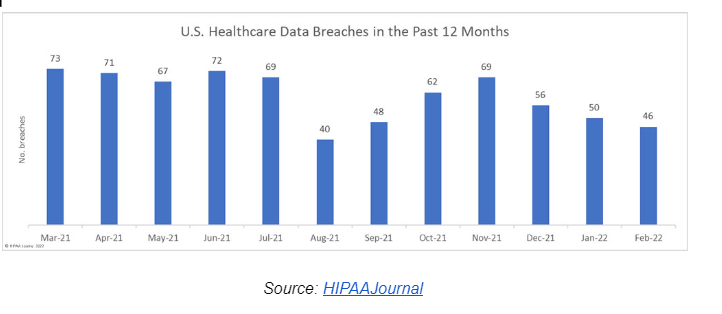
And, this is the reason why we recommend the ideal practice of bolstering your patients’ Protected Health Information (PHI) & Electronic Protected Health Information (E-PHI) with HIPAA & ADA.
So, it doesn’t mean that your website will not at all be vulnerable to cyber attacks, but the probability of data theft & misuse will be less.
In a healthcare website you’ll need to acquire, transfer, and store the PHI records. When your website is integrated with HIPAA, it will ensure that technical, physical, and administrative protection is enabled to secure the records. Moreover, you can store your PHI records in the secure cloud storage which provides access to you, but blocks access to unauthorized users
When your website is HIPAA compliant, all these are possible.
- You can create forms with a link at the top/bottom that redirects to the article that has information on how you are going to use the sensitive data you’d collected from patients
- If you’re outsourcing any medical services, then make sure you agree to a business associate agreement that specifies the data the service providers can access and they cannot
Now, coming to ADA compliance, it’s not something relatable to security, instead, it gives the opportunity to all people with visual, hearing, and other physical impairments to explore all the elements in your website.
- If you’ve used audio content on your site, then ensure it is properly transcripted. And, when a video plays, captions must be turned on automatically
- Make sure your website navigation is keyboard-friendly where users can use only a few keys like tab, space, enter, shift, enter, left/down – up/right arrows, and other common keys
- Images, videos, links should be supported with alt tags, so screen readers/magnifiers can identify them easily and convey it to the users
Not only these, there are a lot more to meet up the compliance standards and user experience. If it seems overwhelming to you, then you can take assistance from an industry expert who can take care of the ADA software installation and customization.
2) Chatbot Service
Being in the 21st century, we don’t have to give a welcome speech for chatbots, as we have already started using them for a variety of purposes.
Before we get into the details, look at how AI-powered chatbots converse with patients in real-time.
Since chatbots don’t know all of the personal factors associated with your patients, they neither react to human emotions nor prescribe detailed diagnoses. Further, if patients misunderstand the instructions from chatbots and if they self-diagnose often, it might ruin their health. It’s obvious that chatbots cannot meet all patients’ needs without a doctor’s consultation.
Chatbots can greatly assist doctors in reacting to patients’ minor concerns. On the other hand, chatbots seem to be a ‘Good Samaritan’ for patients.
Whatever simple actions like booking an appointment, acquiring simple healthcare tips, or getting answers to their queries, it’ll all be accomplished with you just programming these bots, they’ll start playing around.
Patients don’t need to wait for hours in your waiting rooms to carry out such simple activities. This mutual time-saving tech helps doctors visit other critical cases and patients proceed with their medication without any hesitation.
Did you know?
The Healthcare industry is one of the top 5 industries that benefit from chatbot services.
Physicians’ Perceptions about Chatbots
- 78% say chatbots facilitate doctor appointment bookings
- 76% in locating health clinics
- 71% in providing medication information
Several Use Cases of Chatbots in Healthcare Websites
How chatbots are leveraging doctors?
- Enquire about the patient’s health status
- Suggest appropriate specialists based on the patient’s health conditions
- Provide information about the available time slots
- Schedule/reschedule/delete appointments
- Send reminders before the appointment dates
- Answer medical FAQs
- And much more
How chatbots are leveraging patients?
- Book an appointment with the doctor
- Acquire simple healthcare tips based on their conditions
- Asking simple questions regarding medication, diet maintenance, lab tests, consultation timings, etc.
- And much more
Did you know?
52% of patients use chatbots to get insights about their health conditions whereas 36% of physicians approve of the use of healthcare chatbots in treating their patients.
Use chatbots on your healthcare websites and win hearts!…
3) Online Appointment Booking
In this fast-forward era, online scheduling is an amazing tech add-on for patients who lookout for convenience during their treatment phase.
When you don’t take up the responsibility to offer a convenient experience to your clients, say, for example, when they cannot access you to book their appointments from remote/online, they try to switch to other therapists.
- When it’s all about convenient experience, Patientpop says patients prefer the convenience of scheduling an appointment online
- According to RevenueWell, 70% of respondents prefer to book an appointment online
- WPBookingPlugins has plotted that 77% of patients think that having the ability to book, cancel, and change appointments online is important
Patients find it easy & convenient to sign into your healthcare website/app, look for the available slots, and register an appointment. This seems easier for patients than visiting your medical center, waiting in long queues for appointment booking.
As you build a convenient booking system for your patients, they feel like truly being taken care of. Besides providing a satisfactory experience to your patients, you can also avoid recruiting a separate staff for booking appointments through calls, texts, and in-person visits.
Out of your working hours, you can allow patients to schedule/reschedule/cancel bookings, and set up reminders round the clock.
Key Features to Add to Your Booking System
We’ve picked the below features that will add convenience to your patients. You can use this as a checklist when building your booking system.
- Customizable booking page
- Automated SMS & email reminders
- Integration with third-party software for video conferencing, storage, payment, and others
- Real-time calendars
- AI-powered patient-tracking system
How does an Online Appointment System Work on Your Hospital Website?
An online booking system is a cloud-based platform that stores patients’ booking records. Every booking system has a back-end and a front-end.
The back-end looks similar to a dashboard that displays all your booking records, for example, booked dates, the total number of bookings, available slots, and so on. You no need to cross-refer multiple sheets as all the information is displayed here.
The front-end is what will be visible to your patients, they can view, book and pay. Since your patients are going to pay you via online modes, ensure your booking system is secured by encryption, CAPTCHA verification, log-in, and password protection.
Whenever a booking is made, it will automatically be updated to the system in real-time. And, it will send reminder SMS/email to your patients reminding them of the appointment.
Different Ways to Build Your Online Booking System
1. Direct patients to a third-party booking site
Pros
- Fastest way to implement a booking facility
- No need to hire/outsource developers, you can just insert the link of the booking site
- Infact, you can save more time & cost spent on building a custom booking system
- It’s enough if you just pay for the services of the third-party provider
Cons
- Redirect your website traffic to other sites
- Patients might not trust the booking site and would close your website
- As you’re opting for a third-party provider, you’ll not have full control over your booking operations. You’ll have to abide by their terms & conditions
- Your reputation might be spoiled based on the performance of the external booking site
2. Embed a booking system
Pros
- You don’t have to be well-versed in coding, you’re going to just copy the code and use it
- Retain your patients on your site, no need of redirecting them to other sites
Cons
- As you use the code and infrastructure of a third party online booking system provider, you’ve to merely rely on them
- As search engines find it difficult to index the code that is embedded from external sites, this can impact your SEO ranking
3. Install plugins
Pros
- Most of the plugins are mobile responsive, therefore, your patients can easily book your services from mobile as well
- No coding knowledge is required to install and use the plugin
- You can configure and customize the online booking system based on your preferences
- You can calculate the number of bookings from the plugin’s inbuilt analytics feature
Cons
- It may be that some plugins won’t be compatible with your other tools & CMS version
- Free version will have only minimal features. If you want to implement all the features, then you’ve to opt for a premium version
- Sometimes the coding on the plugin will not be written well, this can slow down your website
4. Use an API – Application Programming Interface
Pros
- Online booking APIs come in-built with CMS platforms
- Your API-enabled booking system can easily be indexed through search engines, since it comes in-built with your website CMS
- Integrate both external and internal booking data
Cons
- Technical expertise is required to use an API
- If the API turns obsolete, then it will completely crash your booking system
5. Build a customized online booking system
Pros
- You’ll be the owner of your booking system, there is no need to abide by any other third-party providers’ terms & conditions
- You can customize our booking system as you wish and there are no limitations to add advanced features
Cons
- Technical knowledge is needed, so you’ll have to outsource a team of designers, developers, & marketers
- You’ll have to do proper research inorder to partner with the right outsourcing team, that is experienced & skillful
Choose the one that fits into your budget and embark on building your booking system…
4) Healthcare E-commerce Store
Over a couple of years, right after the COVID-19 breakout, the “e-drugs store” is revolutionizing at an exponential pace! According to Forbes, the healthcare industry is the last frontier for e-commerce.
Did you know?
The healthcare e-commerce market growth is expected to grow to $643.07 billion in 2025 at a large CAGR of 17%.
Amazon, Alibaba, Lloyds Pharmacy, Walgreens Boots Alliance are a few major e-commerce players in the healthcare sector. Not only pharmaceutical drugs, but also medical equipment, health drinks, surgical masks, gloves, walking sticks, pillboxes, and any healthcare product can be sold via these e-commerce stores.
As you integrate the e-commerce functionality into your healthcare website, you can experience these many perks.
- Selling medical products & equipment 24/7
- Online reviews – reputation building
- Web visibility
- Local & global outreach
- Social media promotions
- SEO benefits
- Comparatively lower operation costs
- Acquiring patients’ data
- Ease of tracking patients’ shopping behaviors
Key Features that Add Value to Your Online Pharmacy
- Detailed information about drugs
- Allow patients to upload the prescriptions
- Enable users to request for a drug
- Offer some alternative drugs which have similar medicinal attributes
- Provide subscription option for monthly/weekly ordering of drugs
- Send reminder notifications for refill drugs, vaccination doses, etc
- Provide replacement & refund policies for defective products
The global e-pharmacy market is expected to grow 5 times up to $128 billion by 2023. If you also wanted to bite a piece of this pie, then all you’ve to do is, embark on building your online drug store.
3. Effective Tips to Build & Market Your Medical Website
Healthcare Website Design Tips to Follow
- Apply colors, images, font styles, aesthetics, etc. that give a hospital look-and-feel
- Offer smooth and clear navigation by having a few top-level and sub-level menu items
- Make sure your website meets the mobile-responsive standards
- Optimize your webpage load time. Ensure images/videos/any element used doesn’t slow down your site
- Use clear and effective call-to-actions
Healthcare Digital Marketing Tips to Follow
- Optimize your website for SEO
- Enhance your visibility on social media platforms
- Create blogs, articles, case studies, e-books, infographics, videos, and many other healthcare content marketing materials
- Showcase your patients’ testimonials & reviews
- Conduct email campaigns to capture the attention of patients
- Make use of PPC advertising
4. How much does it Cost to Build a Healthcare Website?
For this question, we cannot give a plain statement without at least once talking to you. Website expectations & customizations differ from person-to-person. Therefore, we’ll first need to talk to you in this regard, note down your requirements and the customized features you need in your medical website.
Only after that, we’ll be able to come up with a pricing plan. If you just wanted to know our general pricing plans, do check out our different engagement models page.
Our Final Thoughts on the Healthcare Website Development
A healthcare website is a win-win for both doctors & patients, no doubt in it. If you like to establish your digital presence, then build a website for your healthcare center. As the first step, you need to decide on what type of website you are going to build, for this, you can look at the healthcare website design inspiration online.
If you’re going to build a website with minimal features, then opting for a website builder should do! If not, you can go with a custom medical website design and marketing option. For this, you’ll need some experienced hands. You can either hire your own in-house team or outsource to a healthcare web development consultancy.
If you’re looking for skilled web professionals with an empathized consulting attitude, then feel free to collaborate with ColorWhistle. We’ve designed a countless number of websites, including our own! :) Look at our home page to explore all the digital services & solutions we offer.
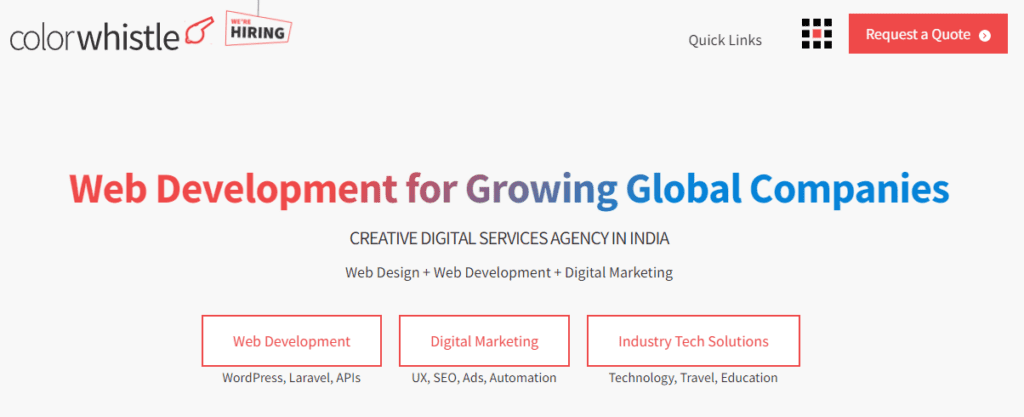
If you’re interested to reach us, just drop us a message or call us at +91 (944).278.9110 . We’re ready to do the needful.

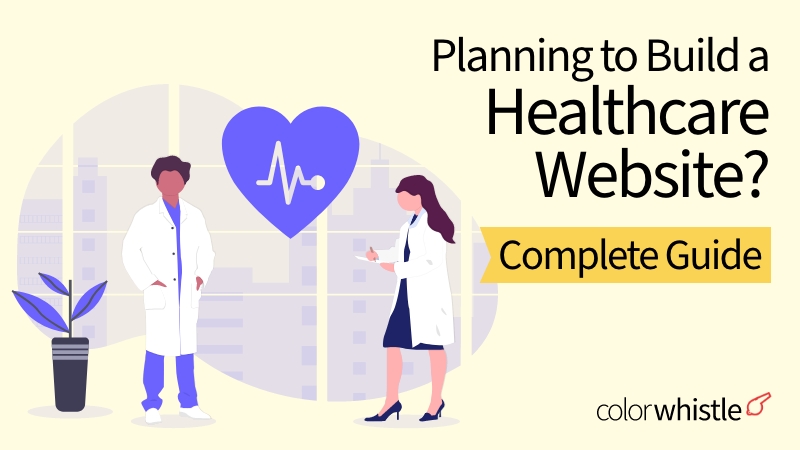
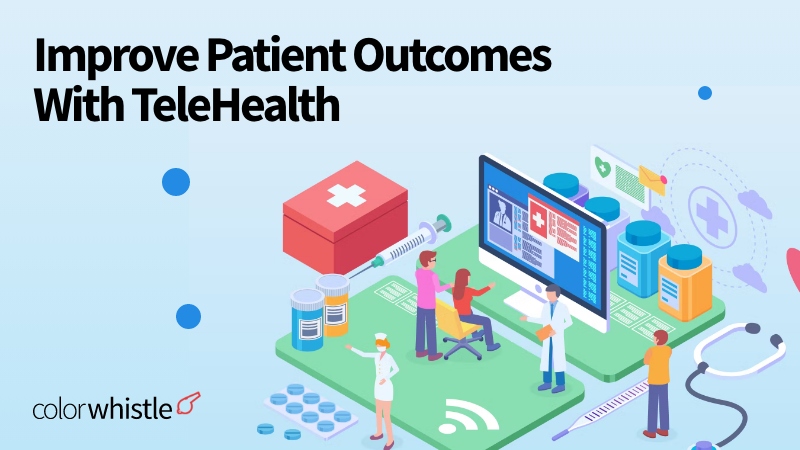
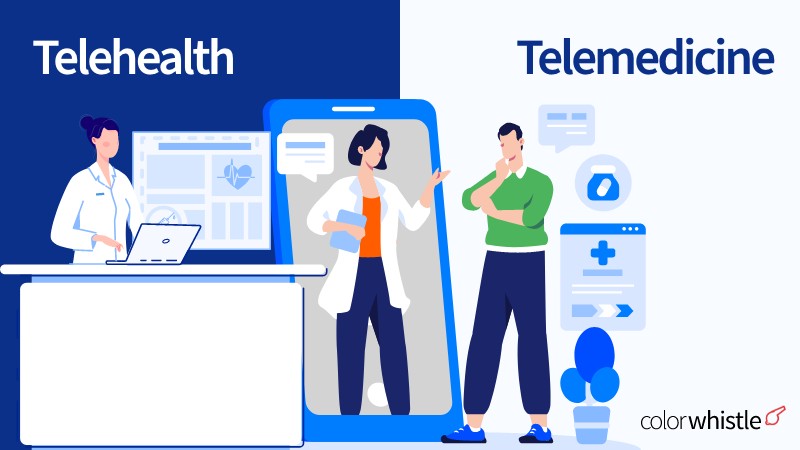


HI Pavitra Samuel,
Good to hear you write blogs and articles, but never read it.
I have no experience writing material for blogs. However, I enjoy writing, and I do write occasionally. If you could advise me on the writing tools I should employ for my material, etc. Let us know about your experience. In fact, I eagerly await hearing from you.